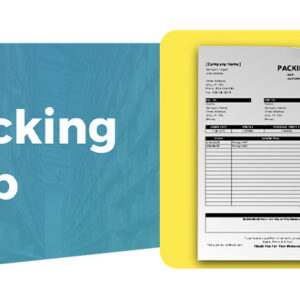If you are a cross-border retailer, you may wonder how to package clothes for shipping. In this article, we’ll go over your packaging options, the best way to package your goods, and shipping cost-cutting tips.
The product includes the packaging. Anyone who has opened a box for an iPhone or a Macbook can attest to how much it can enhance or detract from the customer experience.
To give your customers the best unboxing experience possible, follow these packaging recommendations for clothing.
Table of Contents
The Importance of Choosing the Right Packaging
You first need to have something to put your products in before you can begin shipping your clothes in packaging. Although it’s a crucial step, brands that don’t appreciate the value of effective packaging frequently ignore it.
The fact is that your brand’s long-term success and profitability can be impacted by the choice of packaging material. By safeguarding your products, you can cut down on shipping expenses and return rates. Packaging can enhance the customer experience and increase brand awareness when it is properly branded.
The two main options are cardboard boxes and poly mailer bags. Whichever is best will depend on what you’re sending, how many products you’re sending, and how you’re sending it.
Option 1: Poly Mailer Bags
You’re probably familiar with plastic poly mailer shipping bags if you’ve ever ordered clothing from ASOS (or any of the top clothing retailers in Britain, for that matter). The most preferred method for sending clothing items is in these compact, waterproof, and brandable bags.
Your products are well protected because the polymer material is comparatively sturdy, waterproof, and unlikely to tear during transit. You won’t spend a fortune on product packaging or related shipping costs because the bags are also inexpensive and lightweight.
Additional padding, such as bubble wrap or paper tissue sheets, can be added if you’re worried the bags might rip. Clothing products will be further protected if they are wrapped in plastic.
Option 2: Cardboard Boxes
The most popular type of eCommerce packaging is cardboard boxes. Although they aren’t as widely used as polymer bags for shipping apparel, many brands still use them to safeguard their clothing products.
They are particularly well-liked for sending clothing items with a subscription model, such as ties, socks, and underwear. Large orders of clothing as well as shoes are shipped in cardboard boxes.
Cardboard boxes will provide better protection than poly mailer bags, but they also cost more to ship and buy the packages.

The Best Way to Pack Clothes for Shipping
A crucial aspect of the unboxing experience is how you present your clothing. Not a jumbled bundle of t-shirts and tops, but neatly folded, well-kept clothing is what customers want to see.
The best approach is to flatten fold clothing as neatly as possible. A simple way to fold tops is to:
- Fold any sleeves behind the back
- Fold the edges in
- Fold in half
The same folding technique can be used to fold longer items like dresses and skirts, with an additional fold at the end. Shorts and pants should be folded twice: once with the zip inside and once without. The second fold is not required for shorts.
Do not roll clothes, under any circumstances. It’s not the best way to display packaged apparel products, despite what Marie Kondo may think is the best way to arrange your clothes in your drawers. Rolling results in creases and wrinkles and generally looks unkempt.
Using bubble wrap or tissue paper, it is best to individually wrap each folded article of clothing. This will lessen creasing and prevent damage during shipping.
Finally, pick a package size that takes up the least amount of room. Any extra room during transportation will collapse, increasing the risk of damage to your package.
You May Also Like: Guide to Packaging & Labeling
Factors to Consider When Shipping Clothes
Clothes are simple to ship, and the factors you must master to make sure your deliveries always reach your customers without a hitch are listed below.
Packaging and Marketing
Packaging safeguards the product and aids in establishing and advancing your brand. Costs can be decreased and the unboxing experience improved with effective packaging.
Because the customer’s unboxing experience shapes how they view your brand, packaging and marketing go hand in hand. Prior to placing items in mailers, clothing must be properly folded. To distinguish your brand and give customers a good experience, use packaging inserts and a beautiful presentation.
Shipping Companies
The three main carriers—USPS, UPS, and FedEx—are probably already familiar to you. Each carrier offers a different range of shipping options and prices.
To select the right one, consider the following:
- Destination address: do you ship clothes to customers domestically, internationally, or both?
- Package weight: what is your most common package weight? What are your minimum and maximum package weights?
- Delivery speed: what is your ideal speed of delivery? Your clients may want deliveries on the weekends.
- Service options: do your customers require tracking and delivery confirmation? Does the carrier offer free packaging materials, such as boxes, envelopes, and labels?
- Insurance: what’s your average order value? Do you need insurance? Does the insurance your carrier offers cover it? Are you going to need more insurance?
To choose the best carrier for your store, you should consider each one in the light of the aforementioned factors.
Shipping Rates
The amount you charge customers for shipping expenses is known as your shipping rate, and your pricing strategy will have an impact on it. There are three options you can choose from:
- Real-time carrier rate: you can let your customers choose and pay for the exact shipping option they want by setting up real-time carrier rates.
- Flat Rate: this is a popular option and here you charge a flat rate for all shipments. This might not work if you sell a wide variety of clothing, but it does when you have a set product line.
- Free shipping: customers love this, but someone needs to pay for it. You have two options for paying for shipping: you can raise product prices or use your profit margins to cover the full cost. By capping free shipping at a certain order value, you can reduce costs.
Tips for Packaging Clothes
Although it might appear simple, shipping clothes is actually quite complex. When packing your clothing orders, consider these tips.Don’t pack them too tight
You may believe that since clothes are soft, they can be crammed into virtually any space. This might be true when shipping clothing, such as a straightforward pair of leggings, but using inadequate packaging that gets damaged in transit is a common shipping blunder.
Your clothing is less likely to be torn, ripped, or damaged in transit if you use a box or mailer that is the right size. Less malleable items like jewelry and clothing made of delicate materials need more room and protective shipping supplies like boxes and supporting dunnage.
Consider a Poly Mailer over a Box
Shipping clothes requires careful consideration of the packaging that will best protect your product. You might be overpaying if you use a box that is too big for the item being shipped because of the extra room it requires on the carrier’s truck. Poly mailers are an option in this situation.
Poly mailers are an excellent substitute for boxes when shipping clothing because they are less expensive, take up less space, and reduce shipping costs because they have a lower dimensional weight. Even great options for environmentally friendly packaging exist, such as compostable bags.
Clothes can be shipped in poly mailers to ensure minimal damage and delivery to the customer. Breakable and rigid items shouldn’t be shipped in poly mailers because their delicate nature necessitates more dunnage.
Include the Receipt If a Gift
Common gift items include clothing and accessories. Including a receipt when sending clothing as a gift is helpful for both the sender and the recipient in case a return or exchange is required for a different size. Make the gift receipt electronically accessible if a paper copy cannot be included in the package so the recipient can exchange or return the item as needed.
If you give that option to customers at checkout, 3PLs like ShipBob also let you include personalized gift notes. As the retailer, you can use this to enhance the experience of giving gifts.
Tips to Save on Shipping Costs
As a clothing company, we must balance a variety of factors. the use of economical and effective packaging techniques, as well as the provision of a distinctive and engaging unboxing experience. Here are some suggestions on how to reduce shipping costs.
1. Reduce the Use of Added Cushioning
Reduce the size of your shipment by leaving out cushioning or void fillers if your clothing is not fragile and doesn’t require additional protection.
2. Ship Items Together If Possible
It will be less expensive to ship as many items as you can in a single box as opposed to several boxes if your packages are similar sizes.
3. Keep the Weight of Your Packages in Mind
Your package’s volumetric weight or overall weight, whichever is greater, will determine the shipping cost.
4. Find the Right Sized Box for Your Products
You don’t want your external packaging to be too large because doing so will not only be a waste of material but also increase the cost of shipping. Consider the unboxing experience you want to provide, choose how to pack your clothing, and then calculate how much space it will require, adding a small buffer to ensure that everything will fit.
FAQs
How to Pack Clothes for Shipping Overseas?
Wrap each piece of clothing individually using small cell bubble wrap or kraft paper to avoid damage during transit.
Do not roll them up because they will wrinkle during delivery and not look good.
How to Package Clothes for Shipping Ebay?
Choose a container that’s slightly larger than your item, so you can cushion it with packing material on all sides.
- Make sure the box you use can hold what you’re sending securely.
- Packing your box.
- Address your package.
- Decide on mail service.
- Calculate and apply postage.
- Send Your Package.
How to Send Clothes Via Post Office?
- Select Your Box. Make sure the box you use can hold what you’re sending securely.
- Packing your box.
- Address your package.
- Decide on a mail service.
- Calculate and apply postage.
- Send Your Package.
What is the Cheapest Way to Ship Clothes Internationally?
Typically, it’s USPS because they offer international shipping rates far cheaper than With rates that are nearly three times higher than USPS, using UPS and FedEx to ship internationally without a business account can be very expensive.
Wrapping Up
If you work as an e-commerce fashion retailer, you are aware of the difficulties in starting a clothing company. One of the challenges you face is shipping clothing.
It’s not difficult to package clothing for shipping, but it’s important to make sure your team does it correctly.
The customer experience and your shipping costs can be significantly impacted by how you present and package your products.





